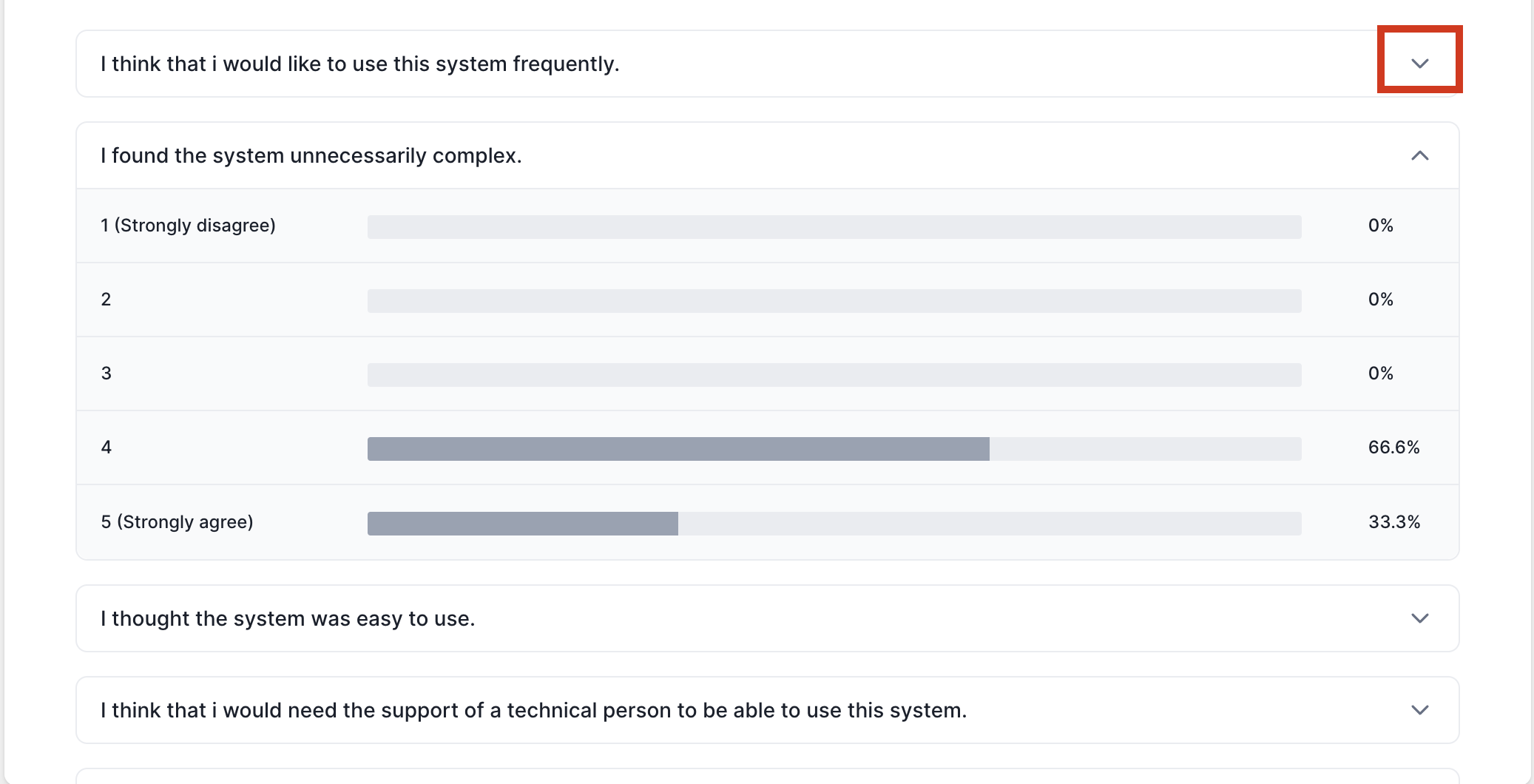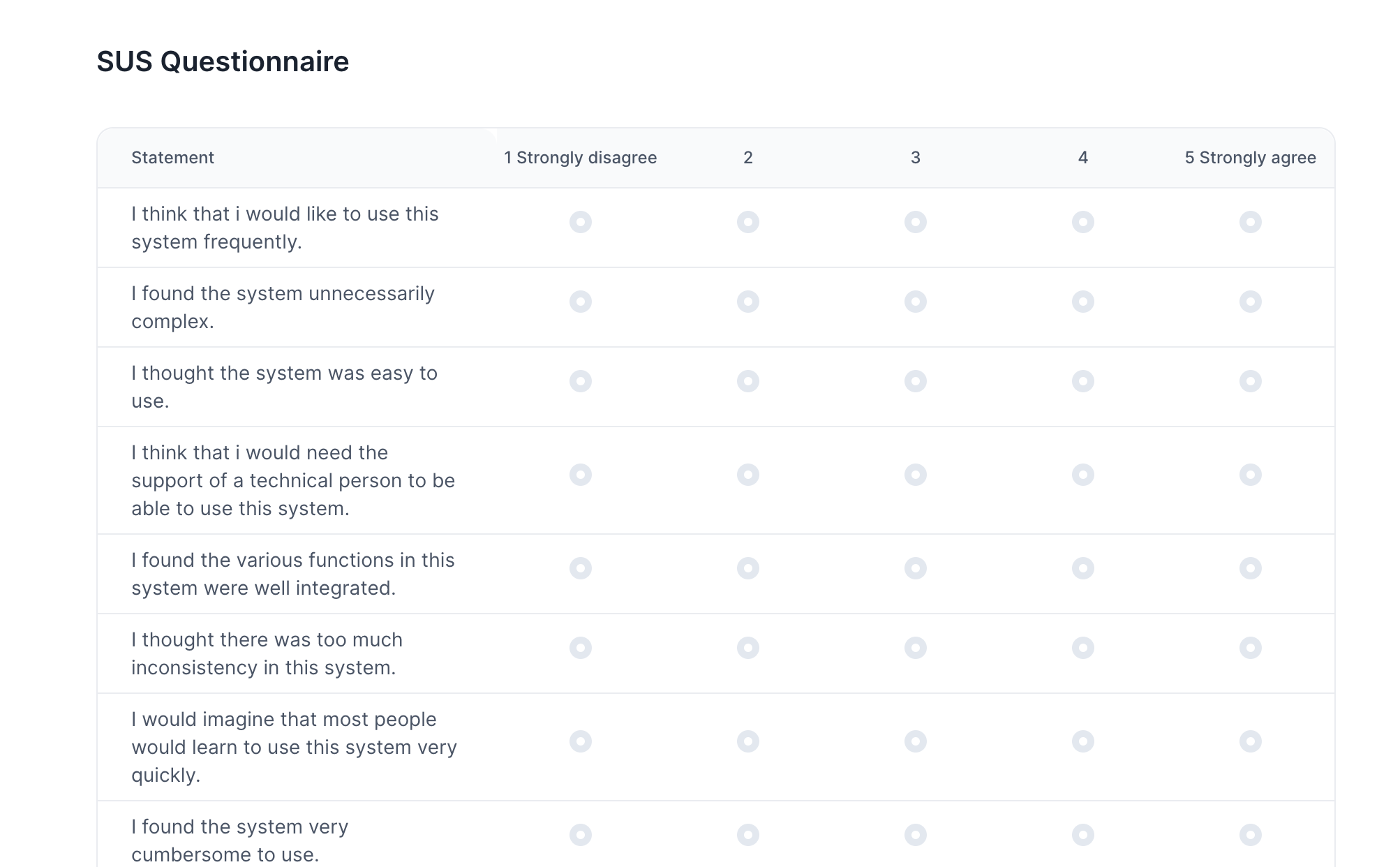SUS Question Type
What is a SUS Questionnaire Block?
The SUS (System Usability Scale) Questionnaire Block allows you to integrate a standardised 10-question instrument into your surveys. This established tool is widely used to evaluate the usability and user experience (UX) of various products, services, and systems. So the SUS block needs to be clubbed with any other UX block.
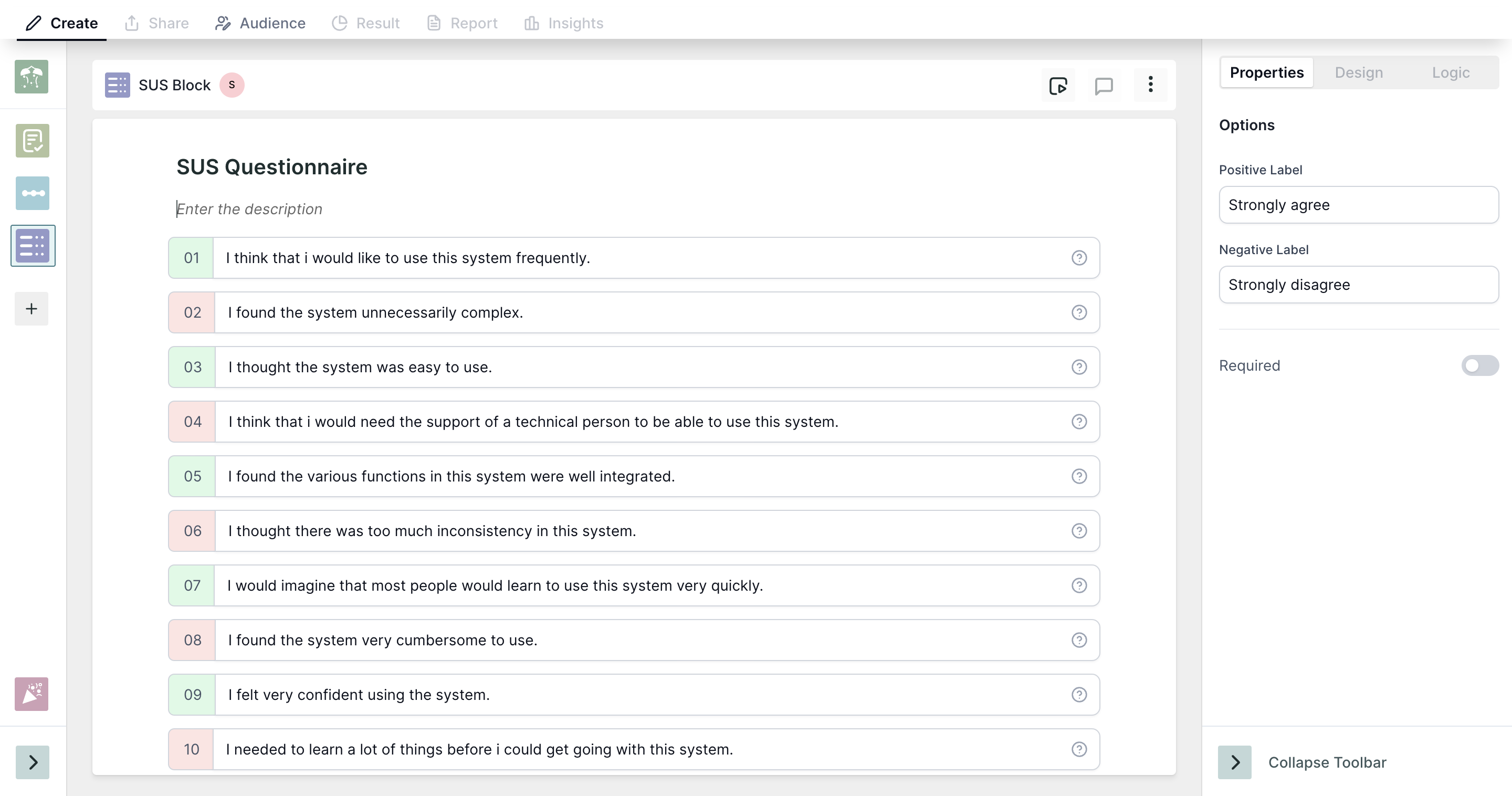
Understanding SUS Questions:
Each SUS question presents a statement related to the user's experience. Respondents rate their agreement with the statement on a 5-point Likert scale, typically ranging from "Strongly disagree" to "Strongly agree." Here are some examples of SUS statements:
"I think that I would find this system useful for my purposes."
"I found the system very easy to use."
"I needed the support of a technical person to use this system"
Properties:
- Customizable Labels: Define labels for the beginning and end points of your chosen scale (e.g., "Strongly disagree" & "Strongly agree").
- Required: This property ensures participants select an answer before proceeding, preventing them from skipping the question.
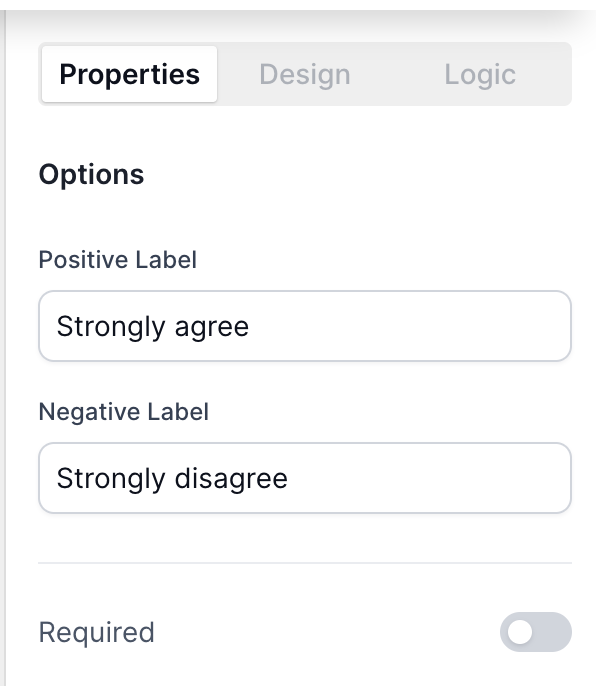
SUS Questionnaire Block Results:
The SUS block results are categorized into four metrics: Score, Grade, Acceptance Criteria, and Adjective. The calculations are as follows:
Grade: Based on the score
- E: Below 50
- D: 50-69
- C: 70-79
- B: 80-89
- A: 90-100
Acceptance Criteria: Based on the score
- Yes: If the score is >= 70
- No: If the score is < 70
Adjective: Based on the score
- Below 50: Extremely poor usability
- 50-69: Poor usability
- 70-79: Okay usability
- 80-89: Good usability
- 90-100: Excellent usability
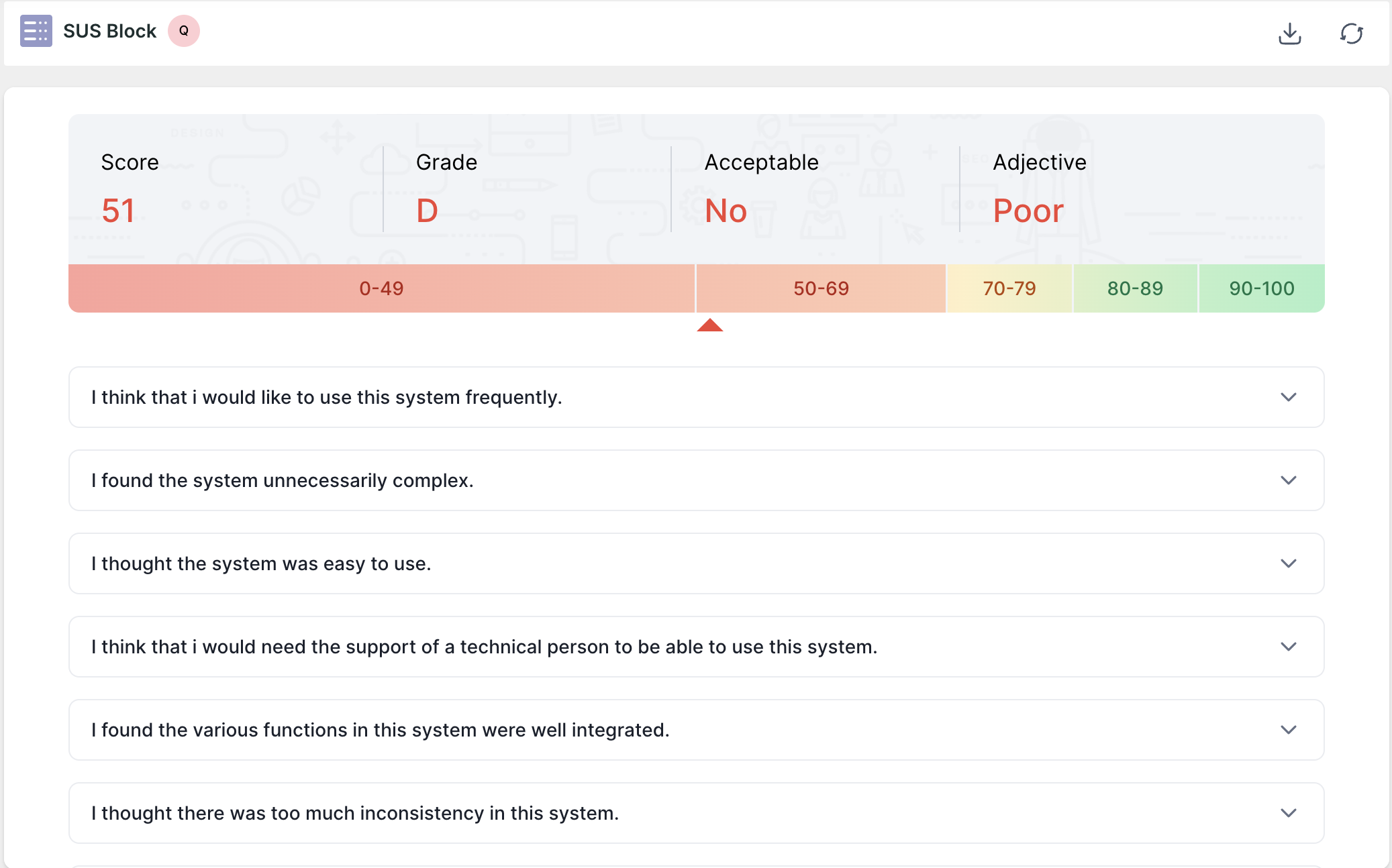
Clicking on the dropdown arrow reveals a detailed breakdown showing the percentage of testers who selected each option for each question.
